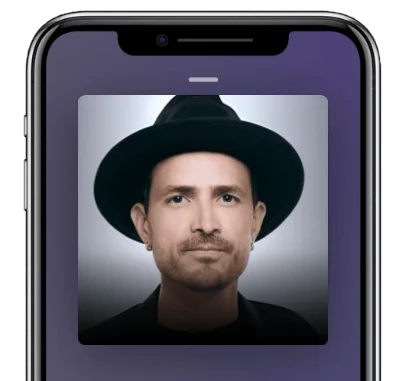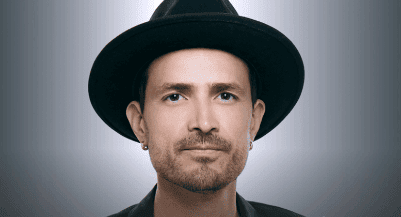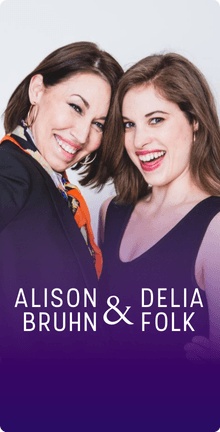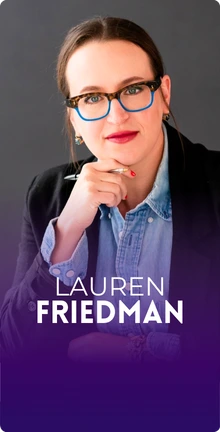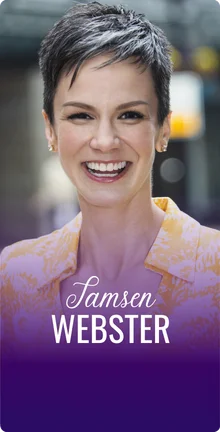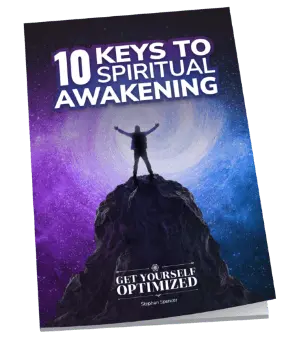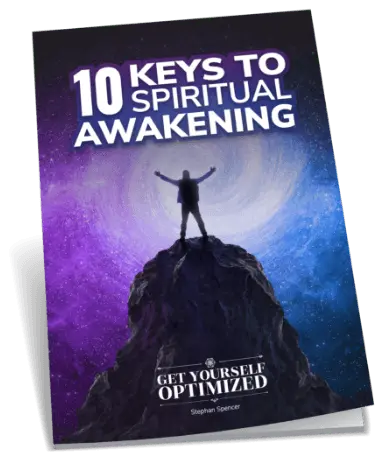Welcome to another episode of Get Yourself Optimized, I’m your host Stephan Spencer, and I have with us today Luke Storey. Luke and I met in a secret society, I had spoken at in Neil Strauss’s secret society in… what was that, 2011?
That sounds about right, about 4 years ago.
Time flies, I’ll tell ya. We reconnected again just recently, last year, he spoke on the topic of biohacking at another society intensive. What a different talk that was, and that was also mindblowing. Luke, I’m going to have you come back for another episode sometime and tell us how to hack your biology for performance to be at the weight you want with the amount of muscle, but today I really want to focus on style and fashion and how to reinvent your style. I have a little bit of experience with that since you’re probably familiar with the before photos of what I used to look like.
I remember that very well from your first talk. That impressed me being in the field that I’m in that, wow, this guy’s really onto something here.
And I was really not onto something before. I just had no clue. It took hiring a fashion expert to come in and gut my wardrobe to become part of the society and learn from Neil, and go to some Tony Robbins events and learn from Tony how to elevate my state and elevate my mindset. And yeah, I went through this mega-transformation. Luke, why don’t you start off by sharing with our listeners here what inspired you to get into this space of fashion and style, what makes the School of Style different, and we’ll just go from there.
Starting out as a fashion stylist was one of those absolutely random accidents.
Perfect, thanks, Stephan. Well, starting out getting to be a fashion stylist myself was just one of those absolutely random accidental, there are no accidents in the universe, as I’ve come to understand in my later years, but at that point, I was actually a musician and had moved to Hollywood after growing up in northern California and was playing in bands, and just partying and living kind of a reckless and yet fun lifestyle in my early twenties, and then one of the people I had met on my travels when I was actually doing some modeling for a clothing brand was a stylist named Keiki Mingus, which coincidentally happens to be the daughter of famed jazz musician Charles Mingus. And Keiki, I met on this shoot, and she said, “Hi, I’m here to be your stylist,” and she dressed me. And I thought that was so funny at the time because I fashioned myself as being such a cool guy, playing in a band, you know, and was like, “This girl is going to dress me?” That was the first exposure I had to that.
Fast forward years later, we became friends and remained friends, and she had moved back from New York to LA after becoming a really big editorial stylist there and being a musician at the time I was actually homeless. Not like living under the 101 freeway homeless, but couch-surfing homeless, Hollywood homeless. And she was on tour, and I was housesitting for her while she was on tour with Tina Turner for a summer. I kind of just became her assistant by default. And her first client, when she came back into town, was Aerosmith. So here I am, this kid playing in bands around Hollywood, trying to make it, trying to get a record deal, and then I’m in Steven Tyler’s hotel room having him scream at me because I got his leather pants altered incorrectly. So, that was my first exposure to this industry. I just jumped in headfirst and realized that I actually really enjoyed working in the music industry in that capacity.
I continued to do both for a number of years, but my styling career really had taken off more than my music career, so at one point I just sort of had to be grateful for that success and have the humility to understand that perhaps I’m not the next Keith Richards or whatever I was trying to be and trying to find my place. I started working for bands in the past 15 years. It’s been primarily musicians, but some odd celebrity like Kim Kardashian or something like that, but I’ve really had diverse clients that I work for from Marilyn Manson to the Foo Fighters, No Doubt, Kanye West, and all sorts of people. So what that really did for me was gave me an understanding of the business and of the artistic part of being a stylist. In 2008, I made the decision to parlay that into my own fashion school. So, in essence, I just kind of had an idea and leap off the cliff, hoping that the parachute would work. Kind of did the fire-aim-ready technique. So I launched School of Style, which has been now almost 7 years in the running and has gone on to do some fantastic things. I was able to use something that I had gained expertise in and share it with the next generation.
Very cool. If you were to give the listeners all the wealth of knowledge and expertise you’ve accumulated over the years, working with celebrities, building up your school and so forth, what would be 3 ninja things that our listeners could take away as in doing something different to convey a better version of themselves through style and fashion.
What made me successful as a stylist, teacher, and entrepreneur is using the talent of empathy.
Absolutely. I would say it’s tough to narrow that down, but I think what has made me successful as a stylist, as well as a teacher and entrepreneur, is really using the talent of empathy. Being able to get inside the client’s head that I’m working with and really being a good listener, and having the ability to be present with someone and ascertain what it is that they need and how it can be of maximum service to them. In terms of just business success in terms of repeat clients and repeat customers as students, I would say really listening and being able to feel what it is that they need and determine the best way to deliver my service. So if I’m working with a client, I can tell right away if they have a big ego that’s maybe on the more dominant, superior side of ego, or if they have an ego that’s very self-conscious and has low self-worth and an inferior attitude.
So, if someone has an inferior attitude, my job is to help boost them psychologically and improve their self-worth. If someone is more dominant, on the side of arrogance and egotism in a more classical sense, then I’m going to make sure, especially if I’m working with a male client, I’m not going to in any way be competitive to them or be threatening to them. But at the same time, I’m not going to kiss their ass and placate that side of their ego either. So to me, it’s a lot of psychological games. For lack of a better term, I don’t like the term “game,” but it is really just about being present with that person and trying to see through who they think they are into who they really are and trying to find the best way to who I really am into that interaction and that relationship. The same is true for working with students. So that’s really the first step is really the inner game. It’s more psychological, emotional, and spiritual, seeing who it is that is in front of me as a blank canvas in dressing them or teaching them.
Then, go to the next step and determine what they are trying to be portraying. If you’re dressing a client, I really want to find out how they want the world to see them, or they want to see themselves. If I’m teaching a student, I want to give them the best possible strategy so that when they go out into the industry and assert themselves in social situations or networking events, how do they want to be perceived? What things should they talk about or avoid talking about? So it kind of starts from within and ends on the out. The same way my career has kind of gone too. I started out dressing people on the outside, and now I’m more into making people feel really good in a number of different lifestyle ways. I think that’s a progression I’ve followed myself as well.
For sure. And that biohacking presentation a couple of months ago that biohacking presentation you gave was hugely valuable to a number of folks in the audience, so kudos for that. So if I were to want to kind of reinvent my style and do an extreme makeover on myself, I’m just being hypothetical, from a style perspective, could I do it myself, or would I need to bring in an expert and work with somebody who makes it kind of a “done with you” solution instead of “Done for you.”
That’s a really great question. It’s really individual. I can give you a couple of different scenarios, and I’ll give you some great strategy pieces around this if you want to do it yourself, also applicable if you’re working with someone. I’ve never liked the idea as the stylist where I’m gonna go in and be the queen with the bowties and say, “Oh honey, you’re not wearing that.” My strategy works because I’m just a regular dude. I like to play in bands, I’m not into sports, so I’m not that much of a dude, but I’m not your typical fashion stylist guy. So I’ve been able to use that to my advantage in working with clients and trying to get to their level. It’s really a partnership relationship. I’m going to figure out what type of archetype they are by doing some research.
The ability to see oneself and be objective about it – it’s not something you can really quantify.
I would say in order to do it yourself, it requires a kind of self-awareness to even know if you have “bad style” and if you’re wearing clothes that are outdated and aren’t sending the message that would best serve you to the world, whether it is socially or professionally. Very difficult to determine whether or not you yourself have the ability to see yourself if you know what I mean. Getting a bit esoteric here, but if you’re overweight you’re probably aware of that. But if you’re wearing some super cheesy jeans from 2001, you might still think they are cool because they were cool then, but things have changed, and now they look really lame. The ability to see oneself and be objective about it – it’s not something you can really quantify. It’s difficult for me to say if someone has the ability to do that.
So based on that fact, I think it’s a blanket recommendation, it’s a really good idea to work with a professional. I would also add if the professional that you find wants to come in and totally nuke your whole wardrobe and redo your whole life, then they better have the reputation and the expertise to back that up for you to trust them. Especially when you’re dealing with men, it’s a different kind of trust. I really have to win them over before I start making any suggestions. I think that’s even more so the case because I’m also a guy. I think it’s harder for a man to listen to a man. Whereas if I were a 26-year-old female with a great body and start stroking that guy’s ego and telling him how sexy they look, they are going to wear a freaking tutu if I told them that’s the answer. So, it’s really about having the ability to know yourself and judge where your style is, whether it’s outdated or not.
Working with a professional is the preferred method, but make sure you have some say, you’re a co-conspirator in that process. It’s a co-creation. You’re the one paying, and you’re going to have the final say, but if you’re dealing with a professional, they are going to really what serves you in the end and not them. In terms of personal styling, which is what we’re talking about versus celebrity styling, if you’re an executive or what we call a civilian, there’s not going to be a lot of pressure on the stylist toward the final outcome. In other words, you’re not going to be on a red carpet or in a situation in which their expertise or reputation is on the line and is going to be judged by their peers. If somebody dresses a rockstar for the Grammys and everyone online is saying how crappy they looked, who is their stylist? Then I’m going to be a lot more persuasive and controlling in dressing that client than if I were dressing someone who is an executive at a movie studio and no one even knows I’ve dressed them, I’m definitely going to give them some more say and some more freedom in that co-creation.
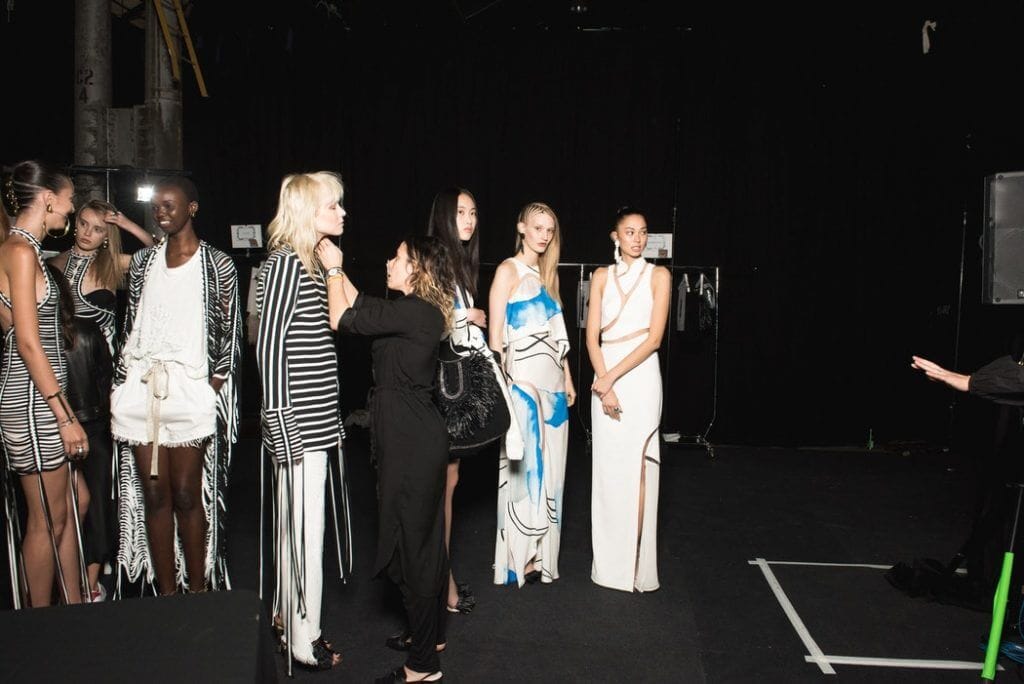
So one thing I did when I did this big transformation in 2009-2010, and as I had mentioned, I hired a stylist to come in and gut my wardrobe, and I think we donated 70-80% of my wardrobe. And then we went out shopping.
Sounds about right, in most cases, yeah.
That’s not something you want to do on your own, you want to bring in an expert to do that.
In the business, we call that a closet cleanse. Going back to your other question, Stephan, if you are a guy that has great style, you’re probably not sitting around wondering if you have great style. You own it, and you’re confident, and the men in your life get it, you’re the one they go to for advice. They’re always asking, “Are these jeans cool?” “Should I get this?” You’re the expert of your buddies, and the women you date or the women in your life are always complimenting you. If you’re not that guy, then you’re one of the other ones, which means you could probably use some help in this.
What do you do professionally? What do you do socially? Where are you going?
The first thing I ask a client when I work with someone on a personal styling business is: What do you do professionally? What do you do socially? Where are you going? If you really don’t go out and you’re sort of a recluse, and you’re just at home, and you’re an online entrepreneur or something, it may not be required that you present yourself in the most stylish way, for the most part. So maybe you don’t need to put that much energy into it. But if you’re someone like, “Wow, people really clown on the way I look all the time, I really dress like shit, and I don’t know what to do,” – working with a stylist is a really good idea.
They might just come in and do something similar to what happened to you, a closet cleanse, and just say, “You know what, we’re starting at zero here. We have to get rid of all this stuff”. I have had guys I work with that are in their late 30s, and they still have their college sweatshirt that they’ve been wearing from when they were actually in school, and they wear that around town. I’m like, they have new hoodies you can buy for $80, right? You don’t have to wear actual clothes from college. They’re like, “Whoa, really? This isn’t cool?” And I go, well, are you in college anymore? At that school? Then, no. There’s your answer.
When you’re having a client build a style plan or avatar or whatever, do you have them go through magazines and clip things out, do you have a special style book, some secret manual thing you flip through and have them pick things out of, how does that work?
Absolutely that’s exactly correct. There are a couple of determining factors, and anyone listening, if you want to apply these yourself, you can. The first thing that one wants to do is establish their classic archetype. And you may not have one, you don’t know what that is. So that’s how a stylist can help you. Say you’re a CEO or a businessperson or an entrepreneur, and you’re 45-50 years old, your style might be what we call the older classic. That’s a Daniel Craig, George Clooney. You’re going to identify typically with celebrities because those will be the most well-known. The average guy, and of course, all these changes for women, I’m just gearing it toward men maybe because I’m talking to one, it will be a similar deal for women.
A guy is not going to buy a fashion magazine and pick out a bunch of pictures of models and say, “I want to dress like this guy” because a model that’s in a men’s fashion magazine is going to be 24 years old, a size 32 waist, a 38 inseam and be ripped and have perfect skin and be totally hairless and look like something that is a cartoon character. It’s important for men to be like, “I’m kinda like George Clooney, a little gray on top, I’m similar build, similar skin tone, I like his attitude and what he portrays. Or you might be a 35-year-old guy that is more going for the surfer archetype. You’re Owen Wilson, you’re Matthew McConaughey. I drop names, and you say, “Yeah, yeah, yeah, those guys are cool.” And we start to build this kind of casual beachwear versus the older classic, which would be suits and a certain color palette or something like that. Or maybe you’re really earthy, and you practice yoga, and you’re more spiritual, you may gravitate more toward the hippie archetype, and you relate to kind of unkempt hair and full beard, you don’t shave a lot, you just want loose, comfortable clothing but you still wanna look somewhat fashionable and cool.
What’s another good one? Actually, I’ll turn you on to a funny one. I’ve been working for these guys for a few years, and I didn’t know what it was called, but there are these kids that are hipsters and kind of dress like lumberjacks. I was talking to my students because I am 44, and I was like, “These guys that kind of dress like outdoorsmen or woodsmen,” and they say, “Yeah, that’s a lumbersexual.” It’s this whole look where they look like a coal miner from the 1800s, and they have the handlebar mustache and the workboots. I don’t know if you’ve been to Silverlake lately or certain areas of downtown LA but this is an archetype. The outdoorsman. The manly-looking man that you look like a lumberjack but have probably never even seen an ax, let alone swung one. So, that is an archetype.
Identifying how you want to be portrayed.
So the first step is identifying how you want to be portrayed. That’s usually done using celebrities, or even in a case like those people watching. The archetype would be the first point, and you might find one that you think works for you, and you work with a stylist who says, “That’s great that you want to be the emo goth, with your hair black and your leather jacket, but you’re 44 and your overweight, that’s not going to fly anymore. You’re not 22.” So, a stylist will help kind of identify that archetype with you and then help implement a plan or a strategy to actually bring that to fruition and bring that archetype to life and fine-tune it so it suits your lifestyle and your personality.
For example, I might, being Luke, this 45-year-old, rocker, tall skinny guy, I might want to be the jock or Channing Tatum or Dwayne Johnson kind of guy. But you know what? I’m never going to grow muscles like that, so probably not the best archetype, even if I think that’s really cool, it’s just not what I was born with. After the archetype, the most important identification would be identifying your body type. You might remember this from the first Neil Strauss event I spoke at. That was such a fun talk because I was speaking with Tim Ferriss and all these great people that I really respect who are also speakers, and I was wondering what people were going to think of my talk. I got a great response, but what was interesting was the number #1 question that these guys and these are smart, successful, talented, amazing guys all ask me, “Dude, what body am I?”. They didn’t really care about their magical color because everybody kind of has a magical color that really suits them, they didn’t care about different brands or stores or what prints were cool, they all wanted to know their body type, which is really funny.
Identifying that is really key because there are tricks and hacks that you can use if you realize what body type you are predominantly. We’re all a little unique, but each of us is leaning predominantly toward one of the three. And if you know that there are a lot of simple, linear, logical tricks you can use to manipulate shapes and geometry to achieve the desired look. What’s the desired look? We all kind of know what the desired look is in the female form, it’s an hourglass. And we know that it has to do with mating and selection and stuff – if you have a female shaped like an hourglass, that’s probably going to be a good mom to produce some healthy offspring for you. It works the same with the male shape or the male body types that you’re going for, based on these optical illusion tricks that we use.
You want that V-shape, that big biceps, big shoulders, narrow waist, skinny long legs. That’s kind of the shape that you’re going for. I forget what the percentages are. For women, for example, the percentage of women that are inherently born as the hourglass is 8%, so the desired look is called mesomorph, that’s your Mark Wahlberg, the guy that doesn’t even have to work out and is still just ripped. I don’t know the percentage for guys, but it’s probably something like that, a very low percentage of those really toned, bulky guys. But that’s the shape you’re going for with men. So if you identify as an ectomorph, as I do, which means you’re tall, thin, long face, narrow forehead, receding chin, narrow chest abdomen, and can’t really grow muscles.
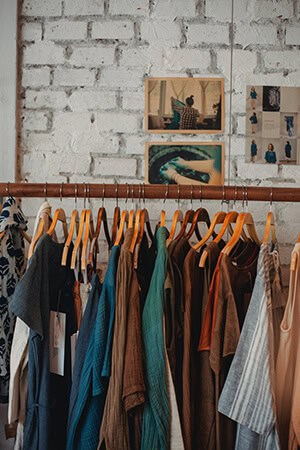
I remember 15 years ago, my brothers were into fitness, so they’d take me to the gym and pump me full of creatine. I was working out like 4 days a week, doing the reps, the leg day, all that antiquated build muscle gym technology that we find out is actually not that good for you, I was doing that, and I could not grow a muscle. I didn’t know I was an ectomorph. You can take an ectomorph to the gym all day long, and they’ll get toned, but they won’t naturally have that strong v shape. Knowing that about oneself is really good. As an ectomorph, I want to use very structured clothing, for example, I will never wear a cardigan that has slumped shoulders because it will naturally emphasize my slumped shoulders. I’m always going to wear a blazer with some shoulder pads. Something that’s nice and square on the top. Now there are different tips and tricks for each body type once you figure out what kind you are. And a stylist doesn’t even necessarily have to know this from a scientific point of view. They can sort of just know this intuitively.
I’ve got a guy here that’s more of the Jack Black. He’s big and round. A linebacker. The guy that’s shaped like a walk-in freezer, you know? These types of guys, again. I can’t grow muscles, and an endomorph can’t get skinny. It’s not going to happen. They’re just not born thin, they have a big, fat neck, and the largest part of their body is around their waist, and even if they are not overweight, they still kind of look overweight. Their head is round, their abdomen is round, and they are just a round-shaped person predominantly. A good stylist knows that I have to maybe add some volume in the shoulder, add some volume in the legs to maybe de-emphasize that middle round bit. But they might not even have it as an intellectual process. They might just see that client walk in the room who’s kind of round and go, okay, I need to add some volume here, minimize here, and they’re able to simulate that mesomorph shape of the v.
So to recap, as someone who wants to reinvent themselves, it’s like in “The 12 Steps.” The first step is admitting you have a problem. Okay, if no one is complimenting you on how cool you look all the time, you’re a nerd, or there is something wrong with how you are dressing. Each one of us has our own gifts. And, of course, this is just superficial stuff, but maybe we’ll get into the psychology a little of it. When you look good outside, and you know you look good, it really does something for the inside, it goes both ways. If I even work in my home office and I just put my sweats on, or I go to yoga, and I wear my yoga clothes, and I come home, and I go to my desk, I will not perform in the same way if I were wearing a $2,000 blazer. It’s just really the truth.
So, back to the strategy is realizing you need help, you’ve got a problem. Seeking out someone who has some answers, identifying your archetype, and identifying your body type. That way, you sort of have a starting point. Back to your original question, do you look at magazines? Do you look on the internet? Absolutely. What I’ll do is I’ll have clients go and get everything that represents their ideal style. I’ll identify an archetype, and then I’ll say, okay, you tell me what brands you like or what stores you like, what celebrities you like, etc. We’ll see how realistic that is, and we’ll start refining those images, refining that process that is specific to you. Then we kind of go into the soup here, go into the mix, and develop the secret sauce, which is really having the skill to go out and implement that vision or creative direction.
Half the battle is, “Okay, what is the goal? Let’s refine that”. It’s very much the same thing we were talking about earlier, it’s the same kind of thing. But the target is myself. The one that wants the new image, I want a makeover. And refining that and refining that. Go online and go to some stores and match what I have in those reference photos or my vision to reality. You can give your average guy a credit card and some pictures of George Clooney, but they will go to the store and come back with something totally wrong. That’s where the knack of a stylist can come in. Go in and really implement the vision.
They put in their 10,000 hours, Malcolm Gladwell says.
Exactly.
So, you mentioned in the course of this a few things that I took note of and want to revisit. You mentioned magical color, and you mentioned people not understanding the brands and the trends. I’d like to delve into those topics a bit more.
They’re very important, they’re also in terms of the color. That one is pretty subtle. It’s a little bit different to codify. When you’re talking about music in terms of a player, in terms of a musician, and you get the take, you can’t really explain why it’s the take, it just feels right. In the use of color in your wardrobe, there are some general guidelines, but you sort of just know. I don’t know if this is something that can be taught because people just don’t have a sense of color. I notice this a lot when I’m looking at the company’s branding. I’ll go online and say, “God, this website looks great, but they have no idea that this is the ugliest color green they could have ever chosen. One good green, and this is not it.
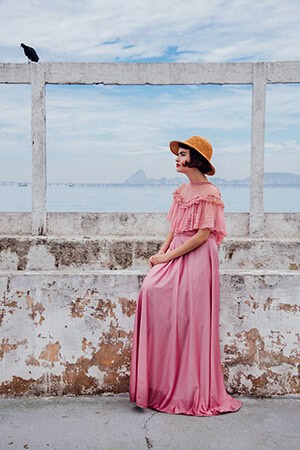
Some people just have a knack for colors that are aesthetically pleasing. And so, your magic color is something everyone has. This is a term I made up, I wouldn’t go and try Googling “magic color”, who knows what you could come up with? When I try to put a dress shirt on a guy, or a dress with a woman, along with the tailoring and the fit, which is a huge part of it, especially in menswear, tailoring is everything. But when I put that on, provided it fits, if the color is a little bit off, it just doesn’t feel right. You’ll burn through like 10 shirts or 10 dresses, and then you get one that fits, and it’s the right color, you’ll identify that it’s their magic color. You’ll go, “Bing!” and it just clicks, and you know it’s on.
Generally, a good way to know what your magic color is, I think most people are tuned into the fact that if you have predominantly blue eyes, colors in the blue or gray palette are going to work well for you. If you have dark brown eyes like I do, earth tones tend to work really well. You’re kind of creating a monochromatic theme using your eye and or hair color in your clothes. Going a bit deeper into that, if you have darker skin, actually, this is broader, if you have darker skin, brighter colors tend to work better. If you have lighter, more fair skin, darker colors tend to work. If you’re matching your skin tone to colors, what you’re looking for is more contrast.
Whereas if you’re doing, you know, working with the eyes and hair color, you’re looking for that opposite of contrast, you’re looking for that monochromatic match. It’s really interesting. That’s looking at it from an analytical standpoint, but for me, I probably never would have figured that out if I didn’t have to teach people stuff. You know, I have a class where I teach my students how to style men. I really had to research this and find out why I do what I do, but I had probably about 10 years of like, if I’m dressing an African-American guy and I put a violet color or light blue or even a bright yellow shirt on them, it just goes “Bing! that’s it!” And I didn’t know it was because of that contrast. If I put, say, a pink shirt on someone who has freckles and red hair, not so much. But if I put a jewel-tone forest green shirt on that guy, boom, I have the contrast.
I never knew why that was, I just used intuition and an artist’s eye to figure that out. In terms of color coordination, those are a couple of definite guidelines. If one wants to experiment a little bit in terms of mixing colors, a really easy hack that’s almost foolproof, provided that you’ve got the hair, and the skin, matching some contrast with the skin, is using the monochromatic trick. Different shades of the same color in one look. A really easy way to explore this, if you happen to live in New York or LA, I’m sure there are some in other parts of the country, those are just the only ones I’ve been to, is there’s a designer called John Varvatos. If you go into a John Varvatos store, I think it’s because he’s a man’s man who’s also a designer. He’s a rock n roll fan, he’s just a cool guy, I don’t know if it was him or the merchandiser or whoever, but if you go to that store, every rack is organized according to a monochromatic theme.
Using a monochromatic theme is much more intuitive and is much easier on the eyes.
If you go to that store as a guy who’s even a novice, it’s very easy to shop, buy a bunch of stuff from one rack, say a burgundy theme rack. Try on a bunch of stuff from the same burgundy, dark red, rust, and wine color palette. You put it on and say, “Damn! I really styled myself well!” You start becoming instantly talented at putting colors together, and it’s because they made it very easy for you. You step over to the rack that’s all different shades of gray and blue and start putting those pieces together, a scarf, a blazer, some gray jeans, some navy boots, or whatever it is. All of a sudden, you’re an amazing stylist because using a monochromatic theme is much more intuitive and is much easier on the eyes. You won’t have problems with clashing colors.
Clashing colors is a huge no-no. That’s if you have 2 colors that are not complimentary. Another thing to really be careful of is to watch out for mismatching of the saturation of the color you are wearing. For example, if you have a brand new expensive black blazer, and then you put on a faded-out t-shirt or concert shirt that is desaturated, it’s been washed out and is greyer than a true dark black. You’re messing with the saturation, and those will clash even though they are monochromatic. So if you want to do the monochromatic trick, you do have to keep in mind the saturation of those colors. You wanna match the saturation. If everything is a bit – even if it’s just the feel of the fabric, if everything is a little worn, and it’s desaturated, it’s washed, it’s been lived in, you don’t throw something completely new into the middle of it. To don’t want a fresh color that’s pressed and fresh out of the box. You want to keep saturation in mind. Also, the color palette.
One thing I learned the hard way was don’t mix and match patterns. Don’t have a patterned shirt with different patterned pants. You look like a clown.
Mixing prints, yeah. I wish my partner Lauren was here. She is an expert at mixing prints. There is really a science to mixing prints, it actually gets very complex. To be honest, I’m not very good at explaining it, I just know how to do it. I might have a shirt that has a print, a printed tie, and even a blazer that has some sort of herringbone or some sort of print. I just sort of intuitively feel if it works, but I couldn’t really tell you why it works, or it doesn’t. But there is real science, especially in women’s fashion, in mixing prints. It’s actually really fascinating when you hear someone explain it. Maybe someday we’ll get Lauren out here to do a section on that. She teaches it in her classes, and I go, “Wow, god, that totally makes sense, you know?”. There is a real art to that. If you’re a novice in dressing yourself, I would follow the advice you just gave and just kind of steer clear. Choose the 1 hero print of your outfit. If you have a crazy printed tie, don’t have a crazy printed shirt. If you have a printed shirt that’s a little wild and a bit of a risk, then have a solid color tie or maybe a two-tone tie, but you’re right. Mixing prints is not for the inexperienced.
There is a real science, especially in women’s fashion, in mixing prints. Share on XBy today’s trends, would you say tie or no tie?
Depends on the venue. That’s the thing, with men’s trends, there’s a lot of tradition. And rules are meant to be broken. But men’s clothing really tends to be less trendy, especially when you get into suiting and wearing a tie and more formal wardrobes. There’s kind of been some steadfast rules that have been around for a few hundred or maybe even a thousand years. I don’t know about ties, but just general guidelines you want to follow. I can’t stand the rules. It’s weird that my business is a school because I freaking hated school and hated confinement and rules. I was always a rebel. But it depends on the nature of the event or where you work if you’re going to wear a tie. A tie has a certain degree of authority to it. I would probably only wear a tie myself if I were going to a pretty serious business meeting or an event that was formal, and I was going to be the only douche walking around that party without a tie. I don’t want to be the one guy who tried to break the mold and went to a fancy wedding, and I’m not wearing a tux, I’m wearing my boardshorts, you know.
You kind of have to follow suit (no pun intended) if the nature of the event calls for it. I would say I could give you a trick on ties, though, there are a bunch of tricks and hacks that I know. If you’re wondering if your tie is right for your jacket or your suit or how wide your tie should be. This is something guys struggle with because the trends change from year to year. But as a rule of thumb, your tie should be the same width as the widest part of the lapel on your blazer. That one should be a pretty easy one to match. But I’ll give a caveat to that and say if you are a more robust gentleman, if you’re an endomorph and have the kind of Jack Black body shape and are very round, then you want to avoid a very narrow lapel and narrow tie, even though that is very much in style today in 2015 because it will accentuate the roundness of your torso and your whole upper half. You wanna use a little bit wider lapel and a wider tie. Isn’t that interesting? There are a lot of subtle tricks and subtle optical illusions, as I said, geometry when it comes to dressing men. Men’s style is so much more subtle.
Your tie should be the same width as the widest part of the lapel on your blazer.
So you mentioned a brand that’s very near and dear to my heart in terms of style, and that’s John Varvatos. What other great brands or personal favorites for you are great for men or women?
Absolutely. I apologize if I’ve geared this whole thing toward men, I don’t even know if that was the point, so if there are women listening, no offense. But perhaps you can use this on your boyfriend or husband to coerce them into looking less embarrassing when you guys go out together. In terms of the brand, I’ll cover the menswear first. Frankly, that’s been my expertise. I’ve worked with some female models over the years, obviously, and some celebrities and stuff but menswear is my thing. So we already mentioned John Varvatos, and I always give a shoutout to that particular brand because I feel that it’s the most diverse.
Based on those three body types, John Varvatos probably fits those body types across the board more than most men’s brands. And John Varvatos is, by the way, only a producer of menswear, they don’t have a women’s line. John Varvatos is great if you’re Lenny Kravitz, and you want to look super slick and edgy and rock and roll and bohemian and a little hippie, it totally works for that, but you could be a totally clean-cut guy and want a sharp suit, and John Varvatos is the answer to that. It also fits a wide age range. So older guys can wear the more conservative subdued pieces, whereas younger guys can wear the louder, more edgy pieces, so I would say John Varvatos is an absolute favorite. I would say that’s a mid to high-range brand. It’s not cheap, but it’s not as expensive as a lot of European designers. Going into stuff for more normal guys. Guys that don’t have a very specific style and are just kind of normal, J. Crew is a great mainstream brand. That would lean a little more toward the preppy archetype, but it’s just good, classic Americana.
I actually took a client there the other day who works for Bulletproof. He has to represent himself at certain events and stuff like that. We walked into J Crew and really knocked out his whole summer wardrobe there for the most part. We went to Banana Republic and got just the perfect pair of chinos, but J. Crew is really hip, they are also helpful in the store in terms of styling you on the spot. You have salespeople who are in retail, but you also have salespeople who are also great personal stylists. J Crew offers some great services in that regard. Moving into another great brand for men, Rag & Bone. Rag &Bone, like John Varvatos, is great for a wide range of men archetypes and a wide range of ages. It would be just street fashion, but it’s just cool. Their stuff is really well-designed, really well-made, you can get very casual, comfortable stuff from Rag & Bone, but also step it up and look really cool if you’re willing to flaunt like that.
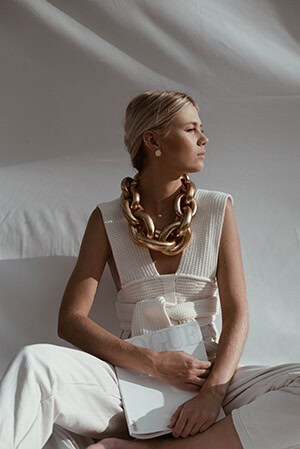
Then I would also recommend for a bit more of the business stuff and conservative, Theory is a great brand, very well designed. Very clean, modern, sleek, simple, fits really well, it’s affordable. Then, for maybe a bit younger, this is what we call “fast fashion.” This would be stores like Top Man, H&M, and Zara, I think most guys are familiar with those brands. This is not clothing that’s going to be that high quality in terms of its construction and longevity, but it’s going to be affordable. When you’re buying pieces that are a little bit more risque for you and more trendy, you don’t want to spend a lot of money on those. That’s kind of the rule of thumb. Only spend money on your staple pieces. If you’re going to spend money on a great wool peacoat, then go spend $2,000. Don’t spend $2,000 on some ripped-up bejeweled jeans that are going to look really pathetic in about 6 months. Those stores like Top Man and Zara, they’re good for fun pieces that you’re going to wear for a few months or maybe a year or two tops and then get rid of them. Those stores also, because I don’t want to neglect the women out there, or if you’re a guy who is going to be shopping for a woman, the same would go for J. Crew.
Again, it’s a little bit on the preppy side, but it’s just very colorful, it fits well, it’s well made, and it’s relatively affordable. Another great one for younger, casual women’s brand is Marc by Marc, which is a Marc Jacobs sub-brand. Then, for women in business, Theory is amazing, a lot of these brands are great across the board. And then, for fast fashion for women, TopShop is probably my favorite. You’re going to get the same kind of prices you would from H&M but kind of a more hip design, I guess you would say. Then in the higher range stuff for menswear, and this is the upper echelon of income here, this means you’re shopping at Barney’s, Nieman’s, that kind of thing. Some of these would be Burberry, Marc Jacobs, and Paul Smith. Those would be great recommendations for stuff that’s designer, but it’s not too loud and crazy. If you’re a super hip guy, you’re going to go dress in Givenchy or Vivienne Westwood or some of these crazier brands like Alexander McQueen. But your average guy who’s not a rockstar is probably going to look a little bit pretentious in those very ostentatious, loud European brands.
Even if you could afford it, you might not be able to pull it off in terms of your archetype. I would say like Paul Smith, Marc Jacobs, Burberry, brands like that make very quality clothing. And those brands are, of course, more expensive, and this really freaks clients out if I bring someone a suit and it’s $2000-$3000. Even just a cashmere sweater or something that seems really expensive. It only seems expensive until you try it on. When you try it on a Dior or Hermes suit that’s $3500, you suddenly realize why it’s $3500. You’re not just paying for the label and the name. You’re paying for the tailoring, the craftsmanship, the materials. Is it overpriced? Absolutely. But not by that much, surprisingly. So, as I said, if you’re going to spend money on pieces, you want investment staple pieces, classics, that you’re going to get some longevity out of. And lastly, to sum up in terms of the high range women’s. Women can mix it up a little more. Some of the higher brands for women are Alexander McQueen, as I’ve mentioned, Balenciaga is amazing, Givenchy, and Kenzo, the women’s archetypes are much more varied, and you have more options, but those are some of my favorite options for women.
I love shopping at Barney’s, I think that’s a great place to get a number of high-end brands and get some great assistance. It’s not nearly as good as having an actual stylist with you, but having a really knowledgeable salesperson helping guide you on some purchases, I’ve found that if you go to Barney’s you can find someone like that who’s knowledgeable and not just trying to sell you stuff but really guide you in a particular look.
If you’re going to spend money on pieces, invest in staple and classic pieces that you’re going to get some longevity out of.
Barney’s is one of my favorite stores when I can afford it. Just not all the time. There’s a certain energy to Barney’s; it has great smelling candles burning, it looks beautiful, it’s very clean, it’s bright, it really is a great shopping experience, and when you’re paying Barney’s prices, you’re absolutely right, the level of customer service you’re going to get there is by far superior to even stores on that par that aren’t really geared toward a younger, hipper set of people. So you go into Barney’s, it’s not a hard sell. So when a salesperson at Barney’s, of course, they want to make the commission, let’s be real, but there’s also a certain level of tact they must uphold. They’re not desperate. Pushing the sale of that $3,000 leather jacket on you that just totally is not you. They have the integrity to not do that. They know when you get home, and you hate that stupid jacket, and you wasted $3,000 on it, you’re never going back to Barney’s, and if you do, you’re never going to that salesperson again. So I think that’s a great suggestion. And they believe in the lifetime value of a customer, and you’re going to be valued as a shopper and as a customer when you go in there.
So, the third piece that I want to make sure we cover is trends. Where are things heading, what’s on its way out, like there are those fancy jeans that, what are those called that?
Well, you have the True Religion jeans that had all of those fancy embellishments and the jewelry on the pockets and all that, and then you had the Ed Hardy shirts and the Christian Aduge shirts, with the rhinestones and all the kind of stuff.
And the Ed Hardy jeans and all that.
In the first month, when that was hot, then cool. In terms of trends, of course, as a stylist, you get asked that a lot. People want the inside track. Like, gimme the inside secret. What’s coming up? What’s gonna be hot? To be honest, I’ve never really, and I’m not saying this to be cool, like the guy who’s like, “I don’t watch tv, I’m smarter than that”, and then spends 12 hr/day on the Internet. I don’t think I’m smart-
Hey, I resent that comment.
I’ve been guilty of that too. I’ve been on Instagram for 2 hours, and then I’m like, “I don’t want to watch a movie, you don’t learn anything.” But I really have never paid much attention to trends. Except for the ones that have clearly been and gone. I’m avoiding trends that are clearly past, but for me and my own personal style and working with clients, I really try to avoid things that are obviously loud, ostentatious, trendy, the stuff where it catches your eye, it’s that bright shiny thing you see, and you fall for it, and you spend a bunch of money, and you wear it twice, and you feel stupid every time you wear it. So, there are trends. I taught at a school here that’s called FIDM. It’s a fashion school on the west coast, one of the biggest in the world, and they have libraries of books and books and books and books all about trend forecasting in the world of commerce and apparel and fashion, trends are huge and its something you have to know about.
But just as a person dressing, it’s not about what’s in right now, because if you just go to Barney’s, anything you buy right now today is in style. If you could do a time capsule, spend $15,000, and throw that in your closet, is that going to be in style? No, it’s not. But if you got a fitted great navy suit, or you got a classic black motorcycle jacket, or a brown riding jacket, or as I said earlier, if you got a wool peacoat, a staple like that today at Barney’s, put it in the time capsule, bust it out in 5 years, yeah. That’ll still be in style. Those are the classic pieces. Falling into trends is a bit risky because it depends on how disposable your income is. Maybe the new Ed Hardy shirts come out, and it has neon lights on them, and they are really cool the first day you see them. If you can afford to drop $300 on that LED t-shirt, go for it. But you have to go in knowing that this is going to have an expiration date and have a keen awareness of when that expiration date is and not use that item past its date.
I better put away my LED t-shirt, then.
Get better at buying that 20% upfront so you don’t have that 80% closet full of expensive crap that you’re never going to wear because it was trendy.
So, I wish I had a better answer like, “Oh man, flare jeans are coming back in 6 months, get on it”. I really just in my personal style I’ve made that mistake so many times, I could probably pull out 5 things that at the time seemed like a great idea, I realized it didn’t really feel like me, I didn’t feel comfortable. It’s the 80/20 rule. I wear 20% of my clothes 80% of the time. Literally. And so you just have to get better and better at buying that 20% upfront so you don’t have that 80% closet full of expensive crap that you’re never going to wear because it was trendy.
-And you mentioned a couple of times how important tailoring is. I remember hiring this stylist to do this closet cleanse. One shirt, she thought, “Okay, this is a nice shirt, but the tailoring is all wrong, it’s way too baggy on the sides. If you get it tailored, it’ll work. It’ll be a good shirt for you. If you’re not going to do that, just toss it.” So I did get it tailored, and it looked great afterward. Tailoring is a lesser-used secret to making your style really pop.
Absolutely right. That’s huge. That’s something we teach students looking to become stylists or personal stylists, and that’s something I educate clients on. Even when I work with a celebrity, the first thing I say to them when I walk into the fitting is, “Hi, I’m Luke the stylist,” and, “Hey, I’m just here to make you feel good about yourself and make you be happy. I really want you to give me permission to do that.” And they do, and I say, “Cool, are you going to let me do my thing that will serve the highest good for you here?” And they say yeah. And I say, “Good. These are the rules. When we try stuff on, you’re not allowed to say you don’t like it until I get my clips and my pins in it and show you what it’s going to look and feel like once it’s been altered. You’re not allowed to say, “But this doesn’t fit.” You don’t know how it fits because the tailor is not here.
And even better, when I have the budget and the time to book one, I’ll actually bring a tailor to shoots and fittings and have the greater authority that I’m able to harbor at that time. The tailor will say, “Oh no, no!” It’s always some little Russian lady. It’s like the Russian mafia of Hollywood. All the tailors, they are all these grumpy little old Russian ladies, but they are really good! So you just keep hiring them even though they are bitches. They know their stuff. They’re so mean to me, like, “They’re not too short,” and they show you how to hem the ends, and the client is like, “Oh my god, these are the same pants?” So, the tailoring is huge, and you’ll find when we’re talking about the designer goods and shopping at a store like Barney’s, and you’re paying that premium that you do at Barney’s, you’ll find that when something is well-designed, it’s going to be well-tailored right out of the box. You’ll find that the cheaper the clothes that you buy, the worse the tailoring is going to be.
Just the other day, I was shooting some videos for our website, and I put on a blazer that I bought years ago, this trendy plaid blazer that is just not me, but I’d worn everything else in my freaking closet, and I’m wearing this plaid suit, and I wore it in the video and thought “well, this is kind of cool, it’s different. It’s not black, so at least something new for me. It’s kind of beige with blue accents in it.” And I looked back at the video, and I was like, I can’t believe one of the girls in my office didn’t say, “Dude, that suit looks like hell”. It was just the worst fit ever. That’s because it wasn’t a Marc Jacobs suit, which would have cost me upwards of $2,000, it was a Marc by Marc suit, which means that the materials, the tailoring, the cutting, the sewing, everything that goes into that garment was cheaper and outsourced to another country. It probably wasn’t Italy where they make really great suits. You could literally see it in the video. That’s a cheap suit. And I could feel it. It doesn’t fit like a Marc Jacobs suit, which is a totally different experience on many levels. It all has to do with tailoring. If you go to H&M and say, “Cool man, I got this suit for $300-$400, well, it’s going to be tailored like a $300 suit, and it’s going to fit you like a $300 suit. And that’s that thing you feel when you put it on. Ah, that’s why it’s quadruple the price of everything else.
Right. And speaking of video and dressing for video, I learned this the hard way too. Do not wear fine patterns because you’ll get this effect that is really hard to get rid of in the post.
Yep, that strobing. So no pinstripes, no herringbone, no checks, no plaid. You can wear big prints and plaid, but even those are risky if the camera is far away. Those work okay if you are close up. But wearing a pinstripe suit or something like that would be a very bad move on camera. There is something about a film camera that does make it moray and turn crazy. As a viewer, you can’t focus on what’s being said because all you can see is this movement, it’s very distracting.
And it’s not just if the camera is far away, but if you’re going to reduce the size of the video, like do a YouTube embed and make it small. Sure, it looks great full screen, but you’re gonna give me a seizure watching this video when it’s small.
Wear more muted tones than highly saturated colors and pure paper white on film or video.
That’s a very good point. I’ll give you another camera trick real quick. That is, don’t wear bright white, and don’t wear highly saturated colors on video. Those tend to reflect light, and so what will happen is you’ll start to pick up the lighting that is on you and reflect that back. Again, it just creates this really distracting effect where all of a sudden, you are like a human lightbulb that is wearing whatever it is, royal blue, white, whatever this highly saturated color is. So you want to wear more muted tones rather than highly saturated colors, and pure bright copy paperwhite is the absolute kiss of death on film or video.
I like that, the human lightbulb.
You’re reflecting that light, and it really does reflect. That mirror effect, kind of.
So you wrap this awesome episode up, let’s end with some other ridiculous faux pas. You mentioned a bunch throughout the course of this episode. But any stand out that you haven’t mentioned yet?
Yeah, sure! I’ll give you a couple, let me think of a couple of women’s because I don’t want to leave them out. If you’re a petite woman, don’t wear heels that are too high. Meaning that is your five-inch Christian Louboutin’s. When you’re doing that, you look like a little girl wearing mommy’s high heels and playing dress-up. Wear a proportionate heel according to your height, your stature. That’s one of the main ones I notice with women, and you’ll see that a lot if you go to this nightclub in Vegas. Not so much in the Whole Foods down in Venice, but this is like a nightclub kind of look where you’re like, oh god, don’t do that! That’s a really major faux pas there.
Let me think of one for menswear. You know, men, I think the most common mistake that men make is going back to tailoring. Guys don’t really understand when something is ill-fitting. And it can be 1 of 2 things. Too tight, guys that are the mesomorph that have the big chest and the shoulders and all that, they’ll try to wear something fitted, and then it pulls under the arms and makes it look like they are the Incredible Hulk about to break out of their shirt. That would be an ill-fitting, too-small size. Ill-fitting is what you described when your stylist came over and found that great shirt of yours in your closet that billows out at the sides. Tailoring means this. You should always be able to fit about 2 to 3 inches between your skin and the fabric that you’re wearing. A lot of guys feel like, “Oh, this is too tight,” if you put them in a pair of jeans that actually fit.
In kind of a sloppy guy who is wearing things that are ill-fitted or maybe even too big for them, they’ll say, “Oh, I can’t wear these jeans, they are too tight.” Really what they are saying is, “These actually fit me.” That’s not to say that every guy can pull off skinny jeans. Just a nice straight-leg solid, like Rag & Bone jeans, nothing too trendy or hipster. But it’s really studying when something fits and when it doesn’t. Don’t wear things that don’t fit you. I’ll give you another men’s. Don’t wear any shoes with a square toe. Unless you went in a time machine back to 2001 and you’re shopping at Aldo. The only type of square toe that you can ever wear, and this is a rule for any guy listening worldwide til the end of time, is like a motorcycle boot. Know a motorcycle boot? Does it have a little buckle on the side? It’s kind of a rounded shoe but has a snub nose. That’s really the only square-toed shoe you could ever get away with. Best fit your archetype. If you’ve got the Bruce Springsteen denim jacket, and faded jeans, you could wear those boots because you’ve probably been on a motorcycle. But if not, I would avoid a square-toed shoe. Not flattering. Not cute.
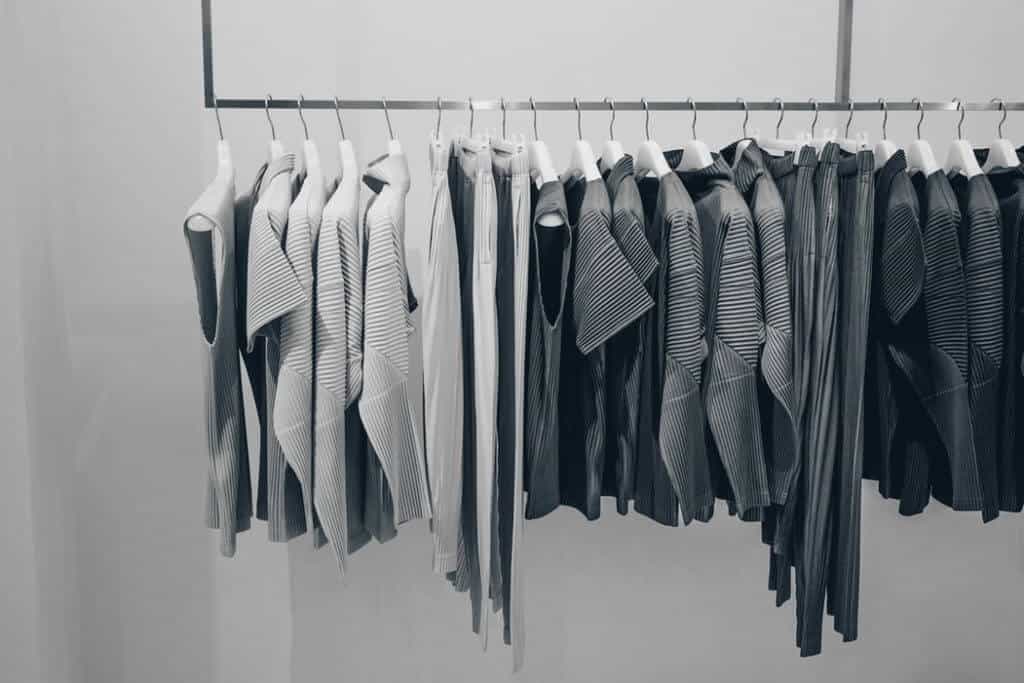
Any faux pas related to grooming? No matter how fashionable you are with the clothing, you just totally blew it with the grooming. An obvious one is to clip the chesthair or to not clip the chesthair.
Guys that are super furry, it always is a little weird to me when they have chest hair, and the first or second button is unbuttoned, and there is this huge tuft of a beard coming out from underneath it. That it’s just a guy thing, and I notice it and think, “Ugh, you should probably do some manscaping.” That would be one. To get more current, sometimes I have a beard, and honestly, I swear to God, the reason is that I’m too lazy to shave. I don’t like shaving. Just a pain in the ass. Every once in a while, I get a beard, and it kind of suits my style. I don’t get the big lumbersexual coalminer beard like Williamsburg, Brooklyn, I work at a coffee roaster, and I look like a logger beard. But a decent hippie kind of beard. And you know what, for me, luckily, it works. It kind of fits my archetype, I’m just kind of an edge, sloppy rock n roll guy. But if you’re sort of clean-cut/preppy or if you tend to wear suits and have a corporate job, and you’re like, “Oh, beards are really in, I’m going to grow a 2-foot-long beard and look like a rabbit out of costume, I would advise again that. You have to be really wary of trends and do what works for you. So even if having a beard was a trend but didn’t work for my face or style, I would be forced to shave.
And always trim your nose hairs. And if you have hairs coming out of your ears, get rid of that.
That is really good advice. I have an issue with that; if I go without shaving for a while and just get lazy, when I finally do it, I’m like, “Wow, I actually have miniature beards coming out of my nostrils.” I have this weird thing, too, this might be TMI, so forgive me, listeners, but I don’t know if it’s my Russian ancestry or what or where this comes from, but I actually get 4 or 5 hairs that grow on the tip of my nose. I pluck those out, and those aren’t very cute, either. I’d say, in general, for guys especially, I’d be really scary if you were a girl, you don’t want long black hairs coming out of your nose – just be aware of the face and ear area that you do keep stray hairs in check.
One last quick question here. How would someone who is interested in learning more about style and fashion get in touch with you or the School of Style?
I’m really easy to find. School of Style is schoolofstyle.com, you’ll find amazing fashion tips or fashion about working in the industry or just dressing yourself, it’s a really great source of free content. There are classes. And then, to see my styling portfolio, it’s really more of a site, and to learn more about what I’ve done in terms of being a stylist myself, you can find that at lukestoreystylist.com. And then an all-over Instagram at lukestorey. And you can also find me on Facebook, I’m big on social media, I’m out there, find me. Say, “What’s up?”
Well, thank you again, this was an awesome episode, and you gave tons of value to listeners. Thanks again, Luke.
Important Links
Connect with Luke Storey
People

